Viola "Swiss giants": characteristics and cultivation from seeds
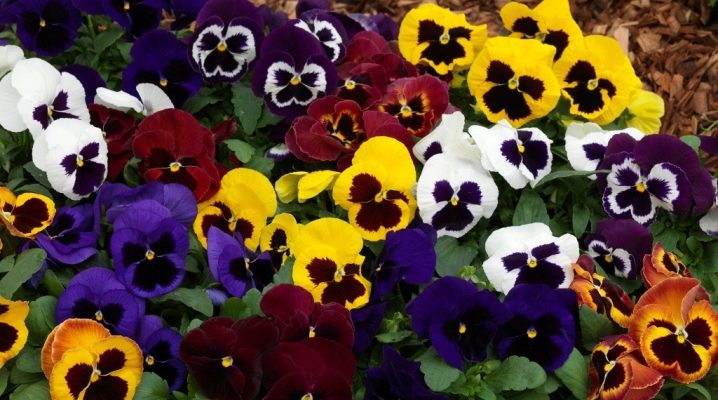
Viola "Swiss Giants" is a herbaceous plant. She has lush flowers of bright colors, popularly she acquired the name pansy. It is used to create landscape design, decorate flower beds and lawns.

Characteristic
Viola's flowers are large, have a varied color, bloom for quite a long time. Their width is up to 10 cm. The height of the bushes is up to 35 cm. It blooms all summer. There is another name for the flower: Vittrock's violet. The main difference between this violet is a different color of the middle in relation to the main shade. This plant will help decorate the garden and balcony, and can also be planted in pots like a houseplant.
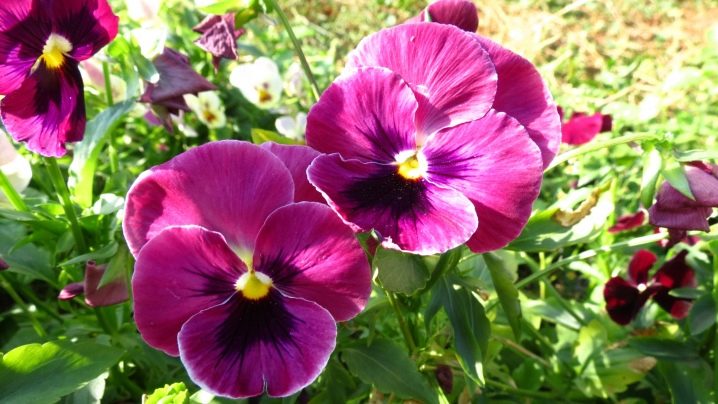
Growing seedlings
In order for the plant to please with flowering already in the first summer period, it must be planted early. "Swiss Giants" is an unpretentious variety, and growing from seeds is not such a difficult process. The seeds are very small, they are planted for seedlings in early spring. To do this, containers with loose soil are needed, where seeds are sown, sprinkled with earth, and covered with a film on top to create a greenhouse effect. The culture containers are placed in a room with a temperature of + 20– + 25 °. From time to time, the film needs to be lifted to ventilate the soil.
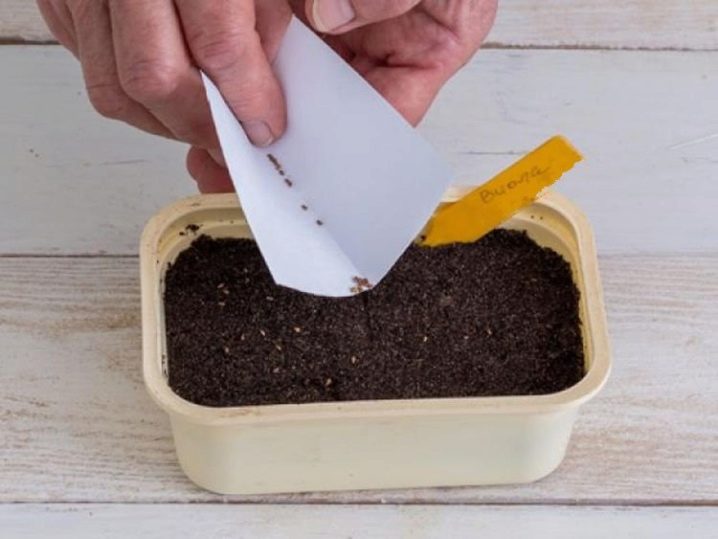
Water as the substrate dries. After emergence, the film is removed. The first shoots should appear in a week or two. Although it so happens that the seeds germinate for a very long time. This happens when:
- expired seed;
- the seeds are sprinkled with a thick layer of soil;
- the soil with which the seeds are sprinkled is very dense and heavy.
Further growth of the "Swiss giants" should take place in the light, so the container with them should be placed on the windowsill. When the leaves appear, the plants are seated in separate containers. The transplant is very well tolerated by the culture, even if it is carried out during the flowering period. Usually, by the period of transplantation, the viola sprouts are strongly stretched, so they need to be buried in the ground up to the cotyledon leaves. This will not only have a positive effect on the appearance of the plant, but also allow the formation of a powerful rhizome. The substrate is either bought ready-made, or the mixture is prepared by themselves in the following fractions:
- 2 pieces of land enriched with nutrients;
- 2 parts of peat;
- 2 parts of humus.
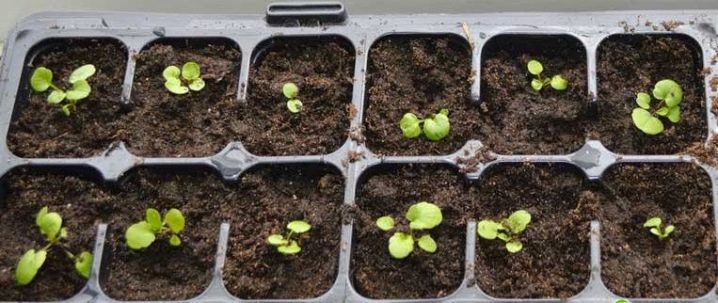
Viola is very demanding on watering, so you need to make sure that the soil does not dry out too much. But stagnation of moisture should not be allowed, because this will lead to decay of the roots.
As soon as the culture grows several real leaves, you need to pin the seedlings so that they bush better.
Landing in the ground
Viola is planted in a permanent place in May, when the optimal temperature regime is established without frost. The bushes are planted in the ground at a distance of 15–20 cm. Crowding is very bad for the plant and contributes to powdery mildew infection. An important point is the choice of a site for planting crops. They grow best in bright areas, but they need shade from the midday sun. The best place for a viola is under a thin crown of trees, where it will be under reliable protection from the summer heat.
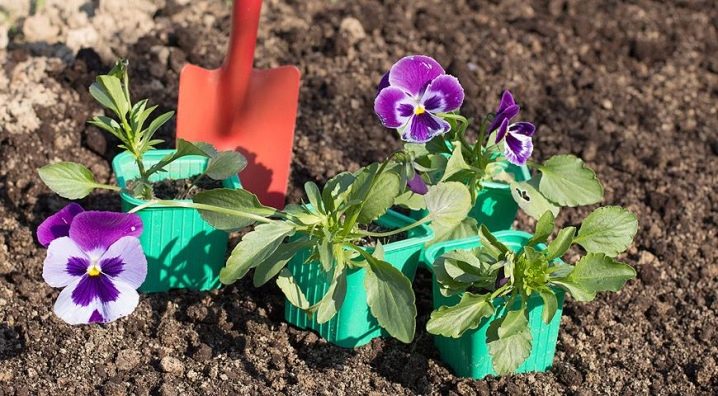
Seeds can also be sown in open ground. Planting times and methods are usually indicated on the packaging. Particular attention should be paid to the expiration date: it is 3 years. Viola should be planted in late spring or early summer: if this is done in early May, then flowers will appear in late summer or early autumn. If the seeds are sown in August, then flowering can only be expected next year.
The seeds are sown in grooves 0.5 cm deep. The distance between them should be 15–20 cm, although you can sow them thicker and then plant them.
After planting, the soil must be well moistened. When real leaves appear, the seedlings must be pinched. Follow-up care consists of periodic watering and fertilization. Viola belongs to biennials, but it can also be perennial (in the case when the plant is planted and reproduces by self-sowing for a long time). If you take care of a flower incorrectly, then it blooms for only one season. Although the flower is winter-hardy and tolerates winter cold well, it is better to cover it for the winter.
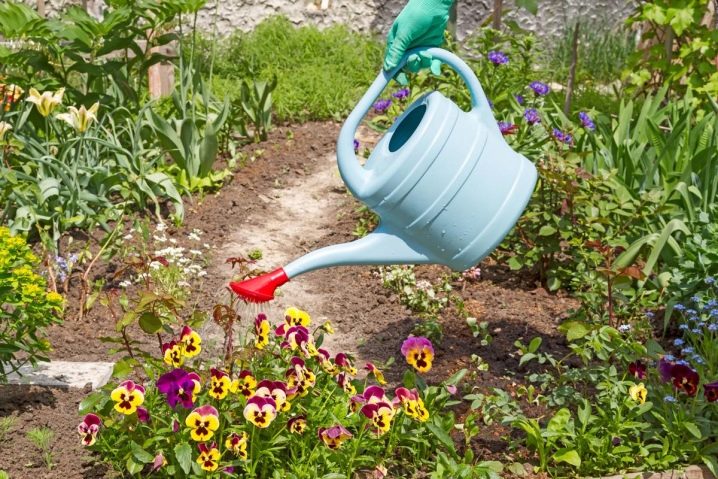
Diseases and pests
Viola does not belong to capricious plants and is not susceptible to diseases. She is sensitive only to the fungus. Common viola diseases are black leg and powdery mildew. Fungicides can help fight these problems. The pests that affect the culture are aphids and scoops, which are destroyed by spraying with appropriate preparations.
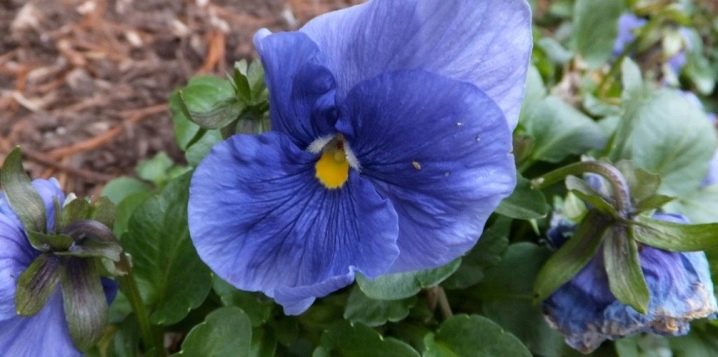
Views
In addition to the "Swiss giants", there are many more varieties that growers really like. All types of this culture differ among themselves not only in the shades of flowers, but also in their size, the size of the stem. There are several famous varieties.
- "Abendglut". The bush is low, with large flowers of a rich burgundy color and red-brown spots.
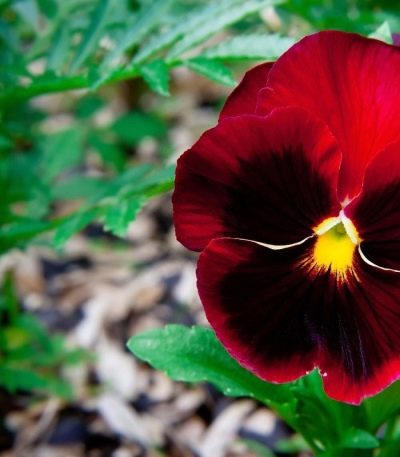
- Ice King. Flowers are white.
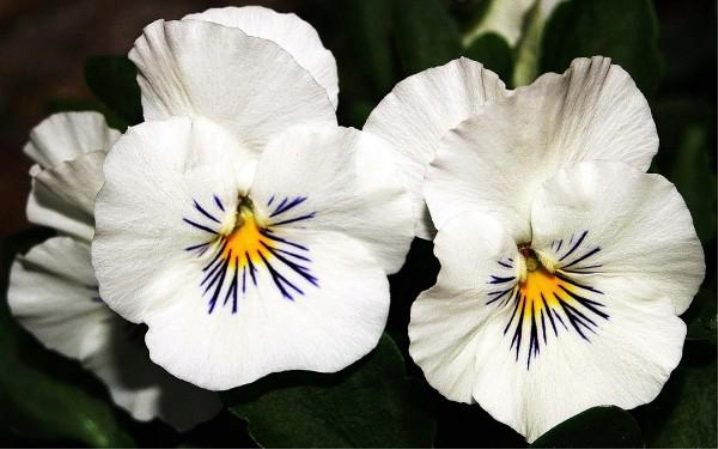
- Fire King. Small purple-yellow flowers.
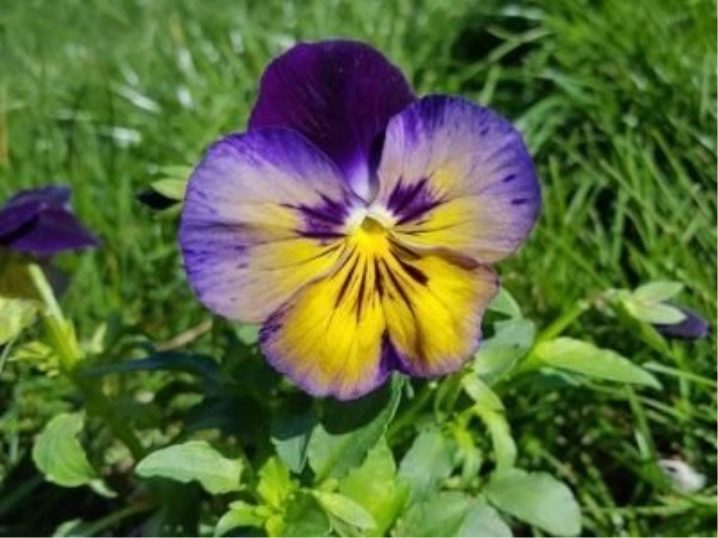
- "Himmelskenigin". Presented in blue colors.
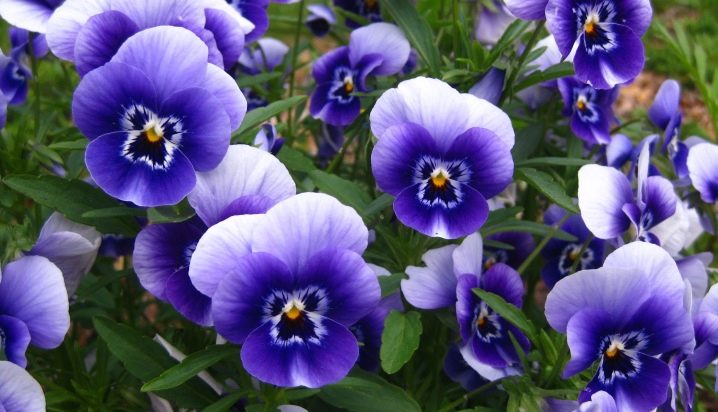
- Viola is horned. She acquired such an original name thanks to the shoot, which is located on the back of the flower. The width of the flowers is up to 5 cm. Flowers are in violet-lilac tones or blue with a yellow spot in the center.
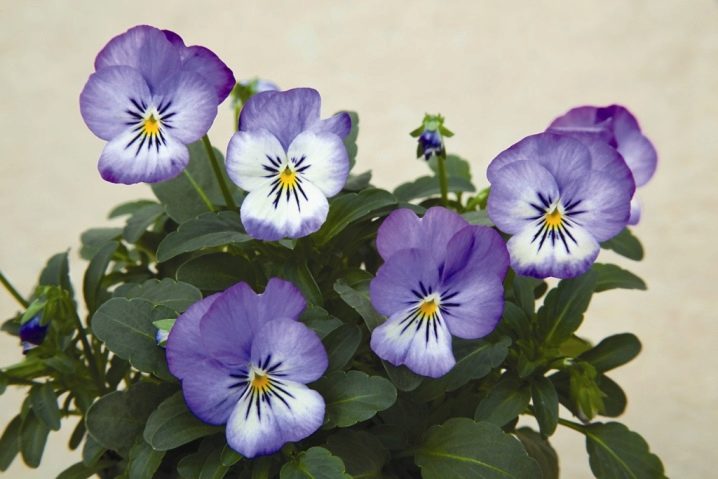
- "Black king". The flowers are dark purple, almost black.

Reviews
Reviews of people growing the variety "Swiss Giants" on their plots are mostly positive. Many people liked this unpretentious plant that does not require special care.
How to grow good viola seedlings is described in the next video.





































































































The comment was sent successfully.